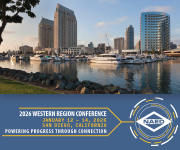Lighting Designer’s Perspective
By Mark Godfrey
Lightfair is a great place to explore several of today’s challenges and issues in the lighting industry, and to understand how people are dealing with these issues. Lightfair seminars, workshops and lectures offer a terrific opportunity to hear a unique perspective on an issue and to learn about very specific topics.
In my effort to seek out how others approach industry-wide challenges, I attended a number of lectures related to the future of lighting, financial analysis and the need to improve the creative process within the design and construction team.
Rogier van der Heide (www.rogiervanderheide.com), Vice President and Chief Design Officer of Philips Lighting, posed these concurrent ideas:
- The lighting design profession must strive to reinvent itself.
- Everyone has the right to create.
There is a wall between the construction and design sides of a typical construction project. Perhaps it is a novel idea that the design team has some “skin in the game” where it comes to construction and cost and the construction team has “skin in the game” where the design, function and design aesthetic is concerned. All parties can push to achieve the best product for the client, thereby improving their combined marketability for future project work. This idea addresses both the idea of reinvention, and inviting new parties to the design process.
Paul Vrabel, PMP, LC of ICF International and Damon Wood, LC, IES of Acuity Brands Lighting, spoke to a full house about the deeply flawed practice of “first order simple life cycle cost analysis”, and walked through the benefits of more thorough “second order net present value life cycle cost analysis”. Even the name is scary, right? Well, it’s really not. There are many tools available online to make the process of evaluating the actual return on investment for the life cycle of the building or project, be it 5 years or 40 years. Take, for example, Acuity’s Visual LCA tool: www.visual-3d.com/software/economictool.aspx
With a simple user interface, nice FAQ tools, and step by step instructions, this tool allows the user to enter three unique lighting and control scenarios to compare year-to-year costs and the lifetime return on investment an owner would see for their initial capital investment. There is some homework to do, and the more accurate your input data, the better the final results will be. This analysis tool also allows the user to input local rebates, tax incentives and deductions.
Mark Lien LC, CLMC, CLEP, HBDP, LEED Accredited Professional BD&C of Osram Sylvania gave a particularly fascinating lecture about the future of the lighting industry, and it is stranger than you can possibly imagine. For example, by integrating nano-scale wires into our brain, it is possible to control our lighted environment by simply thinking “it’s too bright in here”. In fact, there are already “Cat Ear” toy products available on Amazon.com that, when placed on your head, allow you to think and “wiggle” your new cat ears. (Necomimi brain wave-controlled cat ears).
The merging of lighting and IT infrastructure has already produced a technology referred to as “Li-Fi” or secure local network over light. In other words, the high tech industry has successfully used pulsed light waves from LED luminaires to create a mesh network streaming at over 3 gigibits per second. Most residential internet connections today start around 1.5 mbps and can be 3 megabits per second or higher. This new system is two to three orders of magnitude more powerful and completely secure due to direct line-of-sight limits. There are no wireless signals to hijack.
Mark also discussed a very promising area of research that could double or triple the efficacy of LED sources, called Graphene. Graphene is an atom-thick carbon sheet with the capability to replace some of the rare compounds currently used in LED chips to conduct electrons between anode and cathode films, which then release photons. Graphene film, made entirely of carbon, can be produced in large quantities for very low cost.
The larger point is: The rate of change within the lighting industry will continue to unfold at exponential rates as components and materials continue to miniaturize and interconnect with other systems withing our buildings, homes, environments and lives. Traditional norms and practices, particularly those related to lighting technology, will be challenged, upended and eventually reinvented as smart people offer a better product to our end users.
—
Mark Godfrey is a Senior Lighting Designer at INTERFACE ENGINEERING. He can be reached at 503-382-2266.
Interface opens in Washington, DC! Learn more about our new office and leaders here.
Tagged with Lightfair, lighting, tED




